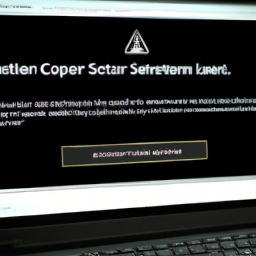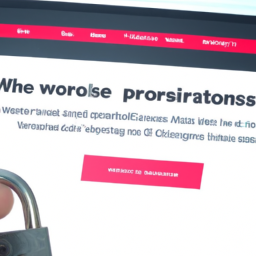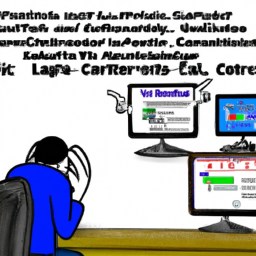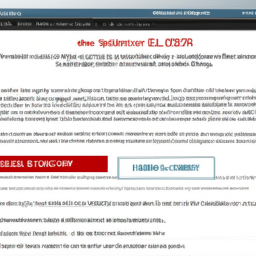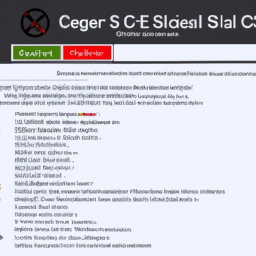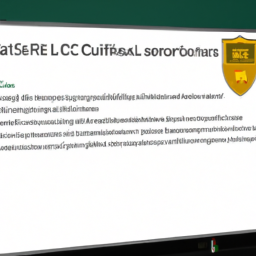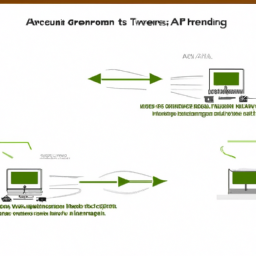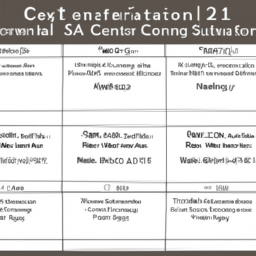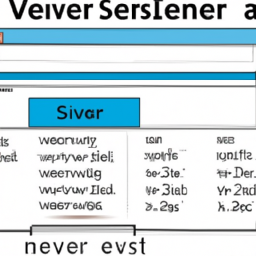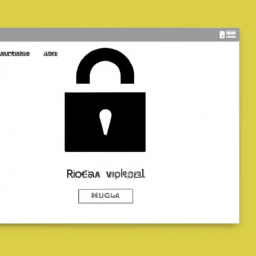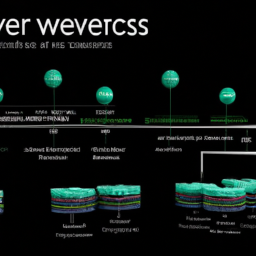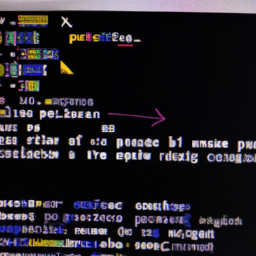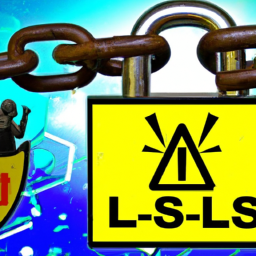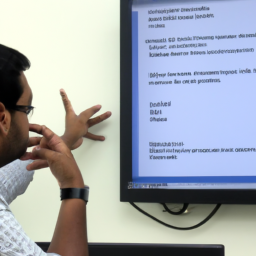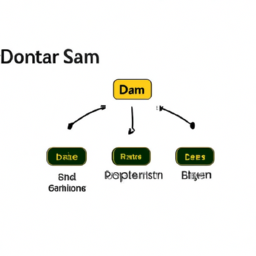Are you frustrated with email delivery issues in your web hosting services? Do you find yourself constantly checking your inbox, waiting for important emails that never seem to arrive? Well, fret no more! In this article, we will delve into the world of troubleshooting email delivery issues in web hosting services.
Email communication is an integral part of our digital lives, and when it doesn’t work properly, it can be incredibly frustrating. But fear not, for we are here to guide you through the labyrinth of email delivery problems.
We will explore various techniques and strategies to help you identify and resolve issues that may be hindering the smooth flow of your emails. From checking your email settings to monitoring deliverability metrics, we will leave no stone unturned in our quest for a solution.
So, get ready to take control of your email delivery and ensure that your messages reach their intended recipients without any hiccups. Let’s dive in!
Key Takeaways
- Checking email settings and ensuring proper authentication methods (SPF, DKIM, DMARC) are in place is crucial.
- Monitoring sender reputation, bounce rates, spam complaints, and engagement metrics is essential.
- Regularly checking for blacklisting and taking necessary actions is important for optimal email delivery.
- Implementing email deliverability best practices, such as authentication and testing, improves success rates.
Check Your Email Settings
You should double-check your email settings to ensure that they’re properly configured for optimal delivery. Email authentication plays a crucial role in troubleshooting SMTP errors.
Start by verifying that your email server supports authentication methods like SPF, DKIM, and DMARC. SPF (Sender Policy Framework) prevents spammers from sending emails on your behalf by checking the sender’s IP address against a list of authorized servers.
DKIM (DomainKeys Identified Mail) adds a digital signature to your emails, ensuring their authenticity.
DMARC (Domain-based Message Authentication, Reporting, and Conformance) combines SPF and DKIM to provide a comprehensive email authentication solution.
Additionally, check that your SMTP server is properly configured with the correct outgoing mail server address, port number, and SSL/TLS settings.
Once your email settings are verified, you can move on to the next section about verifying domain and IP reputation, ensuring a smooth email delivery process.
Verify Domain and IP Reputation
To ensure successful email delivery, it’s crucial to verify your domain and IP reputation.
Start by checking if your domain or IP address is blacklisted, as this can significantly impact your email deliverability.
Next, monitor your sender reputation to identify any potential issues and take necessary actions to maintain a good reputation. This includes adhering to email best practices and promptly addressing spam complaints.
By regularly verifying and managing your domain and IP reputation, you can enhance your email delivery rates and avoid potential delivery issues.
Check if your domain or IP is blacklisted
Make sure to check if your domain or IP address is blacklisted to ensure smooth email delivery in web hosting services. It is important to regularly monitor your reputation to maintain a good sender score. To check if your domain or IP is blacklisted, you can use various online tools and services. One effective way is to use a reputable blacklist checker that scans multiple blacklists simultaneously. This will save you time and effort in manually checking each blacklist. Once you identify that your domain or IP is blacklisted, take immediate action to resolve the issue. This may involve following the blacklist removal process, which typically requires addressing the underlying cause, such as resolving DNS configuration issues or removing malicious content. By regularly checking for email blacklist removal and troubleshooting DNS configuration, you can ensure optimal email delivery and maintain a positive sender reputation. Transitioning into the subsequent section, it is also crucial to monitor your sender reputation and take necessary actions.
Monitor your sender reputation and take necessary actions
Keep an eye on your sender reputation and be proactive in taking the necessary steps to maintain a positive image. Monitoring your sender reputation is crucial for improving email deliverability. Here are four key aspects to consider:
-
Monitor bounce rates: Regularly check for bounced emails to identify any issues with your email lists or infrastructure.
-
Analyze spam complaints: Keep an eye on the number of spam complaints received and take immediate action to address any concerns.
-
Review email engagement metrics: Evaluate open rates, click-through rates, and engagement levels to gauge the effectiveness of your email campaigns.
-
Maintain a good sending frequency: Avoid sending too many emails too frequently, as this can negatively impact your sender reputation.
By actively monitoring your sender reputation and taking necessary actions, you can improve email deliverability and ensure a successful email marketing strategy.
Now let’s move on to reviewing email deliverability best practices.
Review Email Deliverability Best Practices
Implementing email deliverability best practices ensures that your messages reach their intended recipients without any issues. To enhance your email deliverability, it is crucial to focus on email authentication and email deliverability testing. Email authentication verifies the sender’s identity and prevents fraudulent emails. It includes techniques like SPF (Sender Policy Framework), DKIM (DomainKeys Identified Mail), and DMARC (Domain-based Message Authentication, Reporting, and Conformance). Additionally, conducting regular email deliverability testing helps identify and resolve any potential delivery issues before they occur. This can involve monitoring your email reputation, checking for blacklisting, and reviewing bounce rates. By following these best practices, you can optimize your email deliverability and ensure that your messages consistently reach your audience. In the next section, we will discuss how to check for email content issues.
Check for Email Content Issues
When it comes to email deliverability, it’s important to avoid using spam trigger words and phrases that can land your emails in the spam folder.
By optimizing your email formatting, you can enhance the chances of your emails being delivered successfully.
Pay attention to details such as the structure, design, and layout of your emails to ensure they’re visually appealing and easy to read for your recipients.
Avoid spam trigger words and phrases
To prevent your emails from being flagged as spam, make sure you’re aware of common trigger words and phrases. By avoiding spam filters, you can significantly improve your email reputation and increase the chances of your emails reaching the intended recipients’ inboxes.
Spam trigger words and phrases include terms related to money, such as ‘get rich quick’ or ‘earn money fast,’ as well as words that create a sense of urgency, like ‘limited time offer’ or ‘act now.’ Additionally, excessive use of exclamation marks or all capital letters should be avoided.
It’s important to note that spam filters are constantly evolving, so it’s crucial to stay updated on the latest trends in spam detection. By being mindful of these trigger words and phrases, you can optimize your email formatting for better deliverability in the subsequent section.
Optimize email formatting for better deliverability
Improve your chances of reaching your audience’s inboxes by optimizing your email formatting for better deliverability. To ensure your emails don’t get flagged by email filtering systems, follow these best practices:
-
Use a clear and concise subject line that accurately represents the content of your email.
-
Avoid using excessive capitalization, exclamation marks, or spam trigger words and phrases.
-
Structure your email with proper HTML coding and inline CSS to ensure proper rendering across different email clients.
-
Use a responsive design that adapts to different screen sizes, making it easy for recipients to read and interact with your email.
-
Implement email authentication protocols like SPF, DKIM, and DMARC to verify the authenticity of your email and prevent spoofing.
By optimizing your email formatting, you increase the likelihood of your messages landing in your recipients’ inboxes rather than being marked as spam.
In the next section, we’ll discuss how to monitor email deliverability metrics to further improve your email success rate.
Monitor Email Deliverability Metrics
To effectively monitor the deliverability of your emails, you need to track important metrics such as email open rates and click-through rates. By monitoring these metrics, you can gain valuable insights into how well your emails are being received and engaged with by your recipients.
Additionally, analyzing bounce rates and spam complaints can help identify any potential issues with your email delivery, allowing you to take proactive measures to improve your email deliverability.
Track email open rates and click-through rates
By tracking your email open rates and click-through rates, you can gain valuable insights into how effective your email campaigns are and make data-driven decisions for optimizing your web hosting services.
Maximizing engagement is crucial for improving email deliverability, and monitoring these metrics allows you to measure the success of your campaigns. Open rates indicate the percentage of recipients who actually opened your emails, giving you an idea of the effectiveness of your subject lines and sender reputation.
Click-through rates, on the other hand, measure the percentage of recipients who clicked on links within your emails, providing insights into the relevance and effectiveness of your content. By analyzing these rates, you can identify areas for improvement and tailor your email campaigns to better engage your audience.
Transitioning into the subsequent section, analyzing bounce rates and spam complaints can further help you optimize your email delivery.
Analyze bounce rates and spam complaints
Analyzing bounce rates and spam complaints is like uncovering hidden treasures in the vast ocean of email campaigns. Bounce rate analysis provides valuable insights into the effectiveness of your email delivery. By tracking the percentage of bounced emails, you can identify potential issues with your email list or server configuration.
High bounce rates indicate that your emails are not reaching their intended recipients, impacting your overall campaign success. To improve bounce rates, ensure that your email list is up-to-date and that your server is properly configured.
Similarly, spam complaints can negatively impact your email deliverability. By monitoring and analyzing spam complaints, you can identify any issues with your content or sending practices. Implementing spam complaint prevention measures, such as using double opt-in and avoiding spam trigger words, can help maintain a good sender reputation.
Now, let’s explore how to contact your web hosting provider to address any email delivery issues.
Contact Your Web Hosting Provider
To troubleshoot email delivery issues in your web hosting services, one of the first steps you should take is to contact your web hosting provider. Reach out to their technical support team for assistance in resolving the problem.
Ask them to help you analyze the email delivery logs to identify any potential issues or errors. This will allow you to gather valuable information and insights that can help you address the problem effectively.
Reach out to technical support for assistance
Need help troubleshooting email delivery issues in your web hosting service? Reach out to technical support for assistance and they’ll be able to guide you through the process.
When troubleshooting email configuration or email server problems, technical support can provide you with expert advice and solutions. They have the knowledge and experience to identify and resolve any issues that may be causing problems with your email delivery. They can help you check your email settings, verify DNS records, and ensure that your email server is properly configured. Additionally, they can assist you in troubleshooting any issues with your email client or server software.
Once you’ve reached out to technical support and resolved any configuration or server issues, the next step is to ask for help in analyzing email delivery logs to further investigate the problem.
Ask for help in analyzing email delivery logs
Once you’ve reached out to technical support and resolved any configuration or server problems, it’s time to seek assistance in delving deeper into the email delivery logs for a thorough investigation. Here are four steps to help you analyze email bouncebacks and troubleshoot email attachments:
-
Start by examining the email delivery logs to identify any error codes or bounceback messages. These logs contain valuable information about why an email failed to reach its destination.
-
Look for common issues such as incorrect recipient addresses, full mailboxes, or blocked IP addresses. These can often be resolved by making simple adjustments or contacting the recipient’s email provider.
-
If the logs don’t provide clear answers, consult with the technical support team or email service provider. They have the expertise to interpret complex log data and guide you through the troubleshooting process.
-
For email attachments that fail to send or download correctly, check for file size limitations, file format compatibility, or any security settings that could be blocking the attachment. Adjusting these settings or using alternative file transfer methods may resolve the issue.
Remember, thorough analysis of email delivery logs is crucial for identifying and resolving any underlying problems affecting your email delivery.
Frequently Asked Questions
How do I set up email forwarding in my web hosting service?
To set up email forwarding in your web hosting service, you need to configure the email forwarding settings. This allows incoming emails to be automatically forwarded to another email address.
Start by logging into your web hosting account and accessing the email management section.
Locate the email forwarding configuration options and enter the desired email address where you want to forward the emails.
Save the settings and your email forwarding will be set up.
What should I do if my emails are marked as spam by recipients?
If your emails are marked as spam by recipients, it’s crucial to investigate the truth behind this issue.
Start by checking if your emails are encrypted using email encryption protocols, as unencrypted emails are more likely to be flagged as spam.
Additionally, examine how you handle bounced emails, as a high bounce rate can negatively impact your email reputation.
By addressing these factors, you can improve the deliverability of your emails and avoid being marked as spam.
Is it possible to track the delivery status of my sent emails?
To track the delivery status of your sent emails, you can use email tracking tools or services. These tools allow you to monitor when an email is delivered, opened, and clicked by the recipient.
To troubleshoot any issues with email tracking, ensure that your emails are properly formatted, avoid using spam trigger words, and regularly check your email server settings. Additionally, consider using a reputable email service provider that offers robust tracking capabilities and provides troubleshooting tips for any delivery issues you may encounter.
How can I prevent my emails from being blocked by spam filters?
To prevent your emails from being blocked by spam filters, you need to craft your email marketing strategies like a skilled angler. This involves enticing the fish (your audience) to bite without getting caught in the net of spam.
Start by ensuring your email list is up-to-date and engaged. Use a reputable email service provider that offers tools to improve email deliverability.
Optimize your subject lines, content, and sender reputation to increase your chances of success.
Are there any specific email authentication methods that I should implement to improve deliverability?
To improve the deliverability of your emails, there are several email authentication methods you should implement.
Start with SPF (Sender Policy Framework) to specify which servers are allowed to send emails on your behalf.
DKIM (DomainKeys Identified Mail) adds a digital signature to your messages, verifying their authenticity.
DMARC (Domain-based Message Authentication, Reporting, and Conformance) combines SPF and DKIM to provide even stronger protection against email spoofing and phishing attacks.
These methods will greatly enhance your email deliverability.
Conclusion
In conclusion, troubleshooting email delivery issues in web hosting services requires attention to detail and knowledge of the technical aspects involved.
By checking your email settings, verifying domain and IP reputation, reviewing best practices, and monitoring deliverability metrics, you can improve the chances of successful email delivery.
But remember, even with all these measures in place, issues may still arise. So, the question remains: Are you prepared to tackle any future email delivery challenges head-on?
















